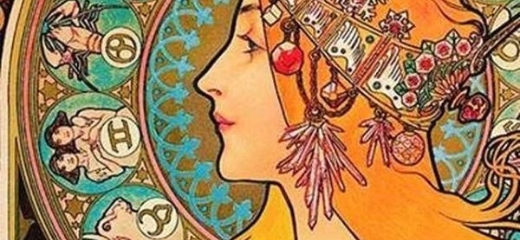Why Klimt is so popular?
Gustav Klimt was an Austrian symbolist painter and a prominent member of the Art Nouveau movement, has left an indelible mark on the art world. His works, characterized by ornate, flowing lines and rich, decorative patterns, have been celebrated for their sensuality, symbolism, and innovative use of color. Klimt’s art has been a significant influence on not only the Art Nouveau movement but also on modernism and the broader cultural sphere. His paintings and murals, often featuring themes of love, death, and the human condition, continue to captivate audiences worldwide and have cemented his place as one of the most important artists of the 20th century. The three reasons why he is so popular are:
- Gustav Klimt’s unique style of art, characterized by his use of bold colors, intricate patterns, and elaborate ornamentation, captures the imagination of art enthusiasts worldwide.
- His provocative subject matter, often depicting female figures in a sensual and erotic manner, challenges traditional societal norms and adds to the allure of his work.
- Klimt’s legacy and influence on the art world can still be seen today, as his works continue to inspire and captivate audiences around the globe.
Main influences of Klimt
Gustav Klimt’s artistic style was shaped by a combination of formal influences, cultural and intellectual currents, and personal experiences. His early training as a decorative painter, his exposure to the work of Impressionists and Post-Impressionists, and the vibrant creative milieu of Vienna all played a role in shaping his distinctive aesthetic. At the same time, Klimt’s personal relationships and romantic affairs also left an indelible mark on his work, which often depicts powerful and sensual women surrounded by intricate patterns and symbols. Through his paintings, Klimt captured the complexities of his era and continues to inspire and captivate viewers around the world today.
Sources That Shaped Gustav Klimt’s Artistic Style
Gustav Klimt was a renowned Austrian painter and one of the most prominent members of the Vienna Secession movement. His work was heavily influenced by a variety of sources, including his early training as a decorative painter, his travels to Italy and France, and the cultural and intellectual climate of Vienna at the turn of the 20th century.
One of Klimt’s earliest and most enduring influences was his training as a decorative painter. He began his career working on public buildings and private residences, creating murals, mosaics, and other ornamental works. This experience gave him a deep appreciation for the expressive potential of decorative art, which is reflected in the intricate patterning and ornamental motifs that characterize much of his later work.
Klimt was also influenced by the work of French Impressionists such as Claude Monet and Edgar Degas, as well as the Post-Impressionist paintings of Vincent van Gogh and Paul Gauguin. These artists were known for their bold use of color and experimental techniques, which Klimt adopted and adapted in his own work.
In addition to these formal influences, Klimt was also shaped by the intellectual and cultural environment of Vienna at the time. The city was a hub of artistic and intellectual activity, with a thriving coffeehouse culture and a vibrant community of writers, musicians, and other creative thinkers. Klimt was part of a group of artists and designers who sought to challenge the traditional academic style of painting and embrace new forms of expression that were more in tune with the modern world.
Finally, Klimt was deeply influenced by his personal relationships and the women in his life. He had a number of affairs throughout his career, and many of his most famous works depict powerful and sensual women, often surrounded by complex patterns and symbols. These paintings are both personal and universal, reflecting Klimt’s own experiences and the broader cultural and social forces that shaped his era.
Overall, Gustav Klimt was a complex and multifaceted artist whose work was shaped by a wide range of influences, from his early training as a decorative painter to the intellectual and cultural milieu of Vienna. His paintings continue to captivate and inspire viewers around the world, and his legacy as one of the most important artists of the early 20th century remains secure.
This brilliant artist passed away on 6 February 1918 due to pneumonia and complications following a stroke. Gustav was just 55 years old when he died.
Experience Vienna through the life and work of Gustav Klimt on our Gustav Klimt Highlights in Vienna private tour, exploring the artist’s most iconic masterpieces and the sites that shaped his legacy.
Throughout art history, many artists have sought to capture the beauty of the world around them, but few have done so with the same level of sensuality and emotion as Gustav Klimt. His works are a celebration of life and love, with vibrant colors and intricate patterns that draw the viewer in and leave them feeling deeply moved. Klimt’s paintings are like windows into another world, where the beauty of nature and the human form are elevated to new heights and inspire feelings of joy and wonder.






